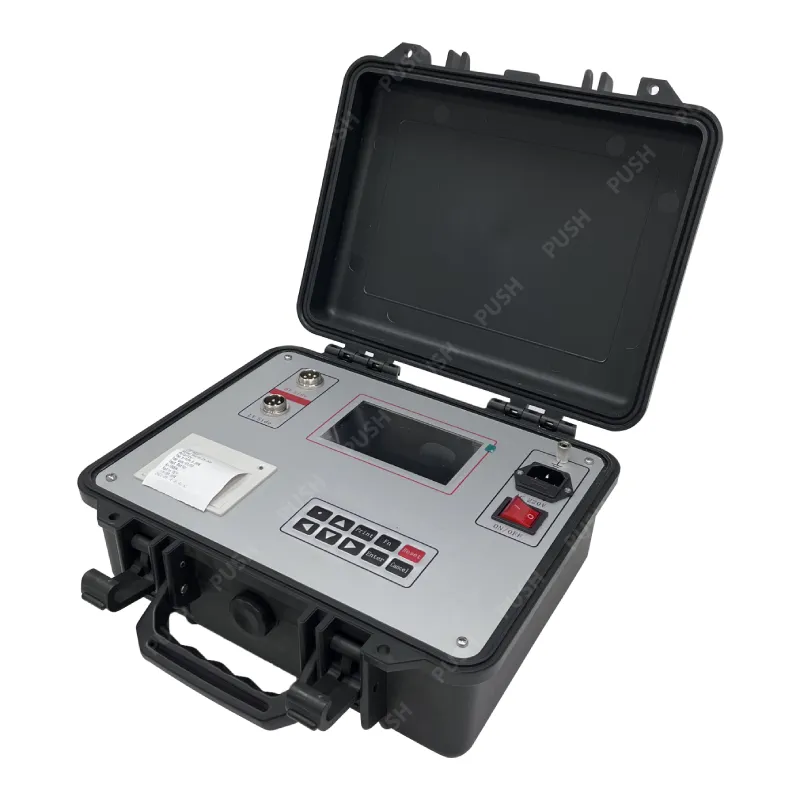 English
English


Evaluation and Analysis of Current and Voltage Transformer Performance in Electrical Systems
Testing of Current Transformer and Potential Transformer
Current transformers (CTs) and potential transformers (PTs) are essential components in electrical power systems, serving critical roles in measurement and protection. Testing these transformers is crucial to ensure their reliability, accuracy, and operational efficiency. In this article, we will discuss the importance of testing CTs and PTs, the common testing methods employed, and the procedures typically involved.
Importance of Testing
The primary function of current transformers is to reduce high currents to a manageable level for measurement and protection devices, enabling the monitoring of electrical systems. Potential transformers, on the other hand, are used to step down high voltages, ensuring safe measurement and monitoring. Any malfunction in these transformers can lead to inaccurate readings, which may compromise the safety and efficiency of the electrical system.
Regular testing of CTs and PTs ensures that these devices are functioning correctly and provides assurance against potential failures. Testing is particularly critical in high-voltage installations, where the consequences of failure could be catastrophic, leading to significant financial losses, damage to equipment, or even loss of life.
Common Testing Methods
Several testing methods are employed to assess the performance of CTs and PTs. These include insulation resistance testing, ratio testing, burden testing, and accuracy testing. Each method evaluates different aspects of the transformers’ performance.
1. Insulation Resistance Testing This test assesses the integrity of the insulation material within the transformer. A high insulation resistance value indicates that the insulation is in good condition, while a low value may suggest deterioration or moisture ingress, which could lead to failures.
2. Ratio Testing This involves applying a known primary current or voltage and measuring the corresponding secondary output. The ratio of the output to the input should conform to the transformer's specified ratio. Deviations from this ratio can indicate potential faults or improper winding.
testing of current transformer and potential transformer

3. Burden Testing This test evaluates the transformer's ability to deliver accurate measurements under specified load conditions. By connecting a known load to the transformer, technicians can assess how the transformer behaves under operational conditions, ensuring it meets the burden specifications.
4. Accuracy Testing This is critical for both CTs and PTs, as it verifies the transformers’ precision under defined current or voltage levels. It is typically conducted using specialized equipment that measures output accuracy against known standards.
Testing Procedures
The testing of CTs and PTs generally follows systematic procedures to ensure comprehensive assessment. Initially, the transformers are visually inspected for physical damage, corrosion, or signs of wear. After this inspection, insulation resistance tests are typically carried out using a megger. Following that, the testing setup is configured for ratio and burden tests.
During ratio testing, both primary and secondary circuits are connected to ensure accurate readings can be obtained. The technicians will record the results and compare them against the manufacturer’s specifications. In accuracy testing, a calibrated primary injection tester can be used to provide a reference standard for determining the transformer's output response.
After conducting the tests, results are analyzed, and any discrepancies are documented. If failures are detected, further diagnostic testing may be required to identify the root cause, followed by rectification measures or replacement of the transformer if necessary.
Conclusion
Testing of current transformers and potential transformers is vital for the reliable operation of electrical systems. By employing systematic testing methods, professionals can ensure that these devices perform optimally, safeguarding both equipment and personnel. Regular maintenance and testing not only enhance the longevity of transformers but also contribute significantly to the overall reliability of power systems.
-
Differences between open cup flash point tester and closed cup flash point testerNewsOct.31,2024
-
The Reliable Load Tap ChangerNewsOct.23,2024
-
The Essential Guide to Hipot TestersNewsOct.23,2024
-
The Digital Insulation TesterNewsOct.23,2024
-
The Best Earth Loop Impedance Tester for SaleNewsOct.23,2024
-
Tan Delta Tester--The Essential Tool for Electrical Insulation TestingNewsOct.23,2024





